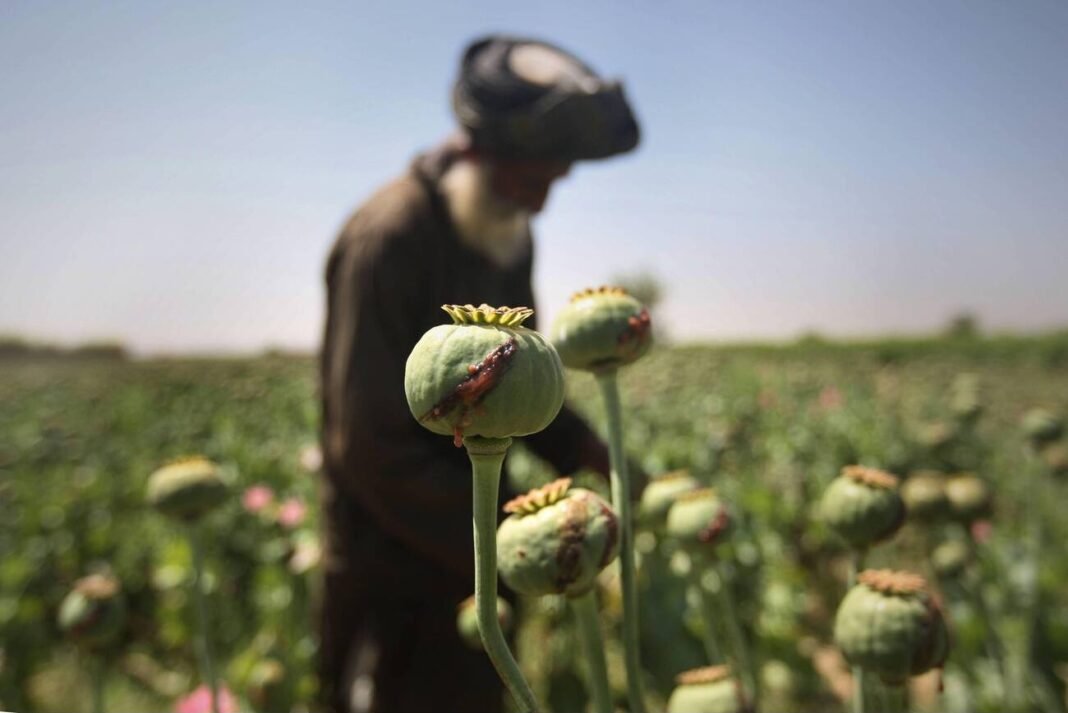After the Taliban returned to power, this Islamist group banned poppy cultivation in Afghanistan. In 2022, the Taliban announced a ban on the production of opium, which used to be one of the mainstays of Afghanistan’s economy. This caused a sharp decrease in opium production. Taliban heroin production ban has caused UN experts to worry about alternative and more dangerous drugs than heroin. This article examines the negative consequences of the poppy cultivation ban in Afghanistan.
Taliban heroin production ban
In the past, 90% of the world’s poppy was supplied from Afghanistan. For many Afghan farmers, growing this substance was a way to survive in the midst of war and poverty. Taliban leader Hebatullah Akhundzadeh banned the cultivation of poppy in an order in April 2022. Taliban heroin production ban was seriously put on the agenda. Of course, the cultivation of this substance was also illegal before the Taliban came to power in August 2021, but despite that, it was prevalent.
Decrease in opium production after the Taliban came to power
After the Taliban returned to power, the Islamist group banned the cultivation of poppy, the raw material for heroin, in Afghanistan. The area under poppy cultivation has decreased from 233 thousand hectares to 10 thousand 800 hectares. The Taliban heroin production ban has also led to a decrease in opium production. The production of this drug decreased from 6,200 tons in 2022 to 333 tons in 2023. Following the Taliban ban on poppy cultivation in 2022, the United Nations says opium production in Afghanistan has dropped by 95 percent.
Increasing the use of alternative drugs instead of opium
The Taliban heroin production ban has led to an increase in the use of alternative drugs. The United Nations Office on Drugs and Crime (UNODC) is in Vienna, Austria. In its annual report, UNODC has warned against the increase in the use of the narcotic drug Nitazene. Nitazene is synthetic heroin. Some say that following the reduction of opium production in Afghanistan, the use of Nitazene has increased and has led to the death of several people in European countries.
UNODC warning about the prevalence of alternative drug use
According to the UNODC, governments have registered the use of these substances as a substitute for heroin in the United States, Canada, Belgium, and the UK. According to the UNODC, if heroin users do not have access to alternative medical drugs, the risk of replacing them with other substances, such as Nitazene or fentanyl, will increase. According to the UNODC report, these substances have a more substantial effect than heroin. Therefore, there is a risk of overdose and death.
Concerns about increased use of cocaine and cannabis
The UNODC has warned about the increase in the number of cocaine and marijuana users and its negative effects on health in European countries. This report states that currently, 292 million people in the world are drug users. This amount is 20% more than the last ten years. The United Nations said that cocaine production would increase by 20 percent to 2,757 in 2023. The report also emphasized that, 228 million people in the world consume cocaine and marijuana. The increase in statistics in this case is due to its legalization in some countries, including Germany, Canada, and Uruguay.
Consequences of the heroin shortage in the near future
The European Monitoring Centre for Drugs and Drug Addiction (EMCDDA) has warned that the European Union must prepare for the consequences of a shortage of heroin in the future. Alexis Goosdeel, director of the EMCDDA, says the analysis of satellite images shows that this ban has taken effect. He added that the heroin reserves in Afghanistan have not finished yet and are on the way to being smuggled to Europe. Therefore, its reduction in the market may take some time. However, Goosdeel says there are signs of a shortage of heroin in some EU member states and the UK.
Heroin is the most common illegal opioid in Europe
Heroin is the most commonly used illegal opioid in Europe. Unlike cocaine, which is booming, the use of heroin is common among older groups and has fewer new users. The danger is that those who use heroin will turn to drugs that are cheaper, easier, and more dangerous than heroin. Some of them can be 700 times stronger than morphine. The United States has seen a dramatic increase in opioid overdose deaths related to fentanyl derivatives.
More destructive opioids replace traditional drugs
Now, after the Taliban heroin production ban, a large number of gardeners in the south of this country have turned to cultivating alternative crops such as dates and pistachios. Following the prohibition of drug cultivation in Afghanistan, European markets are worried about the lack of drug derivatives. According to some experts, after the implementation of the ban on poppy planting in Afghanistan, the European demand market will likely face confusion when faced with the supply of alternative materials. There is a concern for Europe that in case of a shortage of drugs from opium derivatives, the market of more destructive opioids will activate and replace it.

